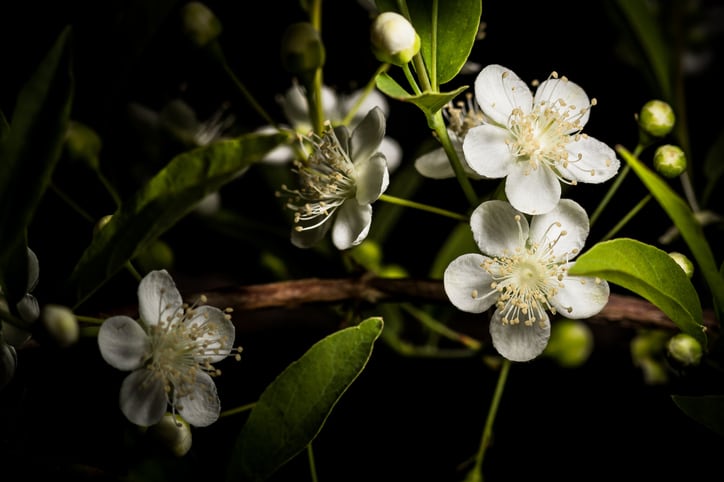Writing in Animal Models and Experimental Medicine, researchers from China investigated the potential of natural products and plant extracts as UV filters in sunscreens via a review looking at studies published over the last six years. The review aimed to pool together “the most significant data” in these studies to better understand the photoprotective properties of certain natural and plant-based ingredients, as well as better understand the major constituents and main biological effects of these compounds.
“More and more commercial sunscreen products with natural products or extracts from plants are available on the market due to the many benefits they provide that traditional sunscreens do not have,” the researchers wrote.
“…This review will provide a strong foundation for evaluating the status and potential use of natural UV filters.”
Sunscreens – organic filters, inorganic filters and plant compounds
The researchers said today’s sunscreen market could be carved up into three categories of UV filters: inorganic, organic and plant compounds.
Inorganic UV filters were classified as physical filters because of active mineral components protecting skin from solar radiation by “scattering and reflecting UV rays”. However, these tended to be opaque and therefore appeared white on the skin making them “cosmetically less acceptable as sunscreens”, the review stated. Many also had “numerous safety challenges that need to be overcome”.
Organic UV filters were more widespread forming part of more than 60 kinds of organic sunscreens researched and developed internationally, with 20 approved in the European Union; 27 approved in Japan; 25 in China; and 14 by the FDA in the US, according to the review. There remained, however, strict restrictions on use of these organic filters, the researchers said.
The third category – plant compounds – had gained more traction in recent years, largely due to the additional active properties they offered. And whilst the researchers acknowledged there were no officially approved natural commercial sun filters on the market today, they said research indicated strong potential for certain extracts that could absorb UV to reduce sunburn, act as a natural UV filter but also offer antioxidant or anti-inflammatory activity, particularly “plant extracts with aromatic rings in their structures, such as flavonoids and polyphenols”.
“…Botanical ingredients used as UV filters also usually exhibit strong antioxidant properties. Therefore, these natural products are more advantageous as UV filters and are likely to be the future of sunscreens. Based on these properties, the additional of botanical ingredients to skin care cosmetics has been a predictable trend.”
Plant protection – understanding the data
The researchers said the review had involved “extensive searches and rigorous screening” to identify the most significant data for plant extracts and natural products with photoprotective ability published between 2016 and 2021. The data included the plant parts used, extraction methods, types of compound, major constituents, and main effects.
Plant extracts identified included aloe vera leaves, blackberry fruits, campomanesia leaves, safflower seed oil, coffee, hibiscus leaves and flowers, larch bark, moringa leaves, guava fruit, and common grape vine peel or fruits. Many of these species, they said, also had a major constituent and/or main biological effect identified.
The researchers said flavonoids and total polyphenolics were the “most studied components with photoprotective properties”.
“In the strict sense, flavonoids are a category of polyphenolic compounds synthesised via the phenylpropanoid metabolic pathway in plants and have attracted considerable attention recently in scientific and therapeutic fields. The presence of double bonds or aromatic rings in the molecular structure of flavonoids gives them UV absorption properties in range of 200-400nm, which makes them suitable for use as sunscreen agents,” they wrote.
Flavonoids most often reported as possessing photoprotective ability were rutin and quercetin – identified separately or together in various plant species. Certain research also highlighted grape extracts, rich in flavonoids and phenolic acids, as “critical therapeutical components of new after-sun cosmetics” to reduce oxidative stress, inflammation and immunosuppression in sunburned skin, the review said.
Antioxidants reported as reducing UV-induced free radical damage, though offering no direct photoprotective activity, included monomeric anthocyanin pigment, ellagitannins and catechin and were also identified in several botanical compounds. Phenylpropionic acids, naturally occurring in many plants in the form of glycosides or esters, also showed anti-UV ability through antioxidant and tyrosinase inhibitory activity. “This suggests that phenylpropionic acids show anti-UV property indirectly,” the researchers said.
“…Antioxidant activity is a crucial mechanism by which botanical extracts exert photoprotective activity,” according to the review.
UV-protectant abilities
Beyond this, a polysaccharide from the flower bud of Sophora japonica L. offered a “significant UV-protectant ability” and fructan from white garlic was also reported as offering a protective effect on UVB-induced keratinocyte damage. Other compounds such as osthole, carotenoids, and herbal oils had also shown “significant UV-protectant abilities”, the researchers said. In a wider range of plants, lignin, a type of aromatic polymer, could be considered a “natural UV screening agent”, though many studies said its “unfavourable dark colour” hindered application in sunscreens.
As interest in the use of botanicals for skin protection and sunscreen development continued to rise, the researchers said efforts to identify and integrate plant-based UV filters into formulations would undoubtedly happen in the future.
Source: Animal Models and Experimental Medicine
Published online ahead of print, doi: 10.1002/ame2.12295
Title: “Natural products and extracts from plants as natural UV filters for sunscreens: A review”
Authors: L. Li et al.




